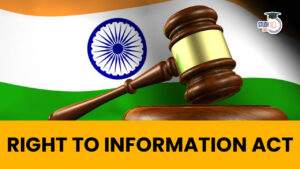Table of Contents
Context: The Supreme Court emphasised the need for a balance between developing railway infrastructure in Haldwani, Uttarakhand and recognizing the fundamental right to shelter for nearly 50,000 people living on railway land.
Haldwani encroachments: Background
- The context of the Haldwani case involved the Railways seeking to amend a 2023 order by the Uttarakhand High Court.
- This order had instructed the eviction of families living on railway land within a week due to disruptions caused by flooding from the Gaula River.
- The flooding has caused significant interruptions to railway services in the area, prompting the need for additional land to lay new railway tracks.
- The Supreme Court directed the State Chief Secretary to coordinate with the Railway authorities and the Ministry of Urban Affairs to develop a just and reasonable relocation plan for the affected people.
About Right to Shelter
- The Right to Shelter is essentially derived from the broader Right to Life (Article 21) which ensures protection of life and personal liberty.
- Additionally, Article 19(1)(e) of the Constitution allows every citizen the right to reside and settle in any part of the country.
| Protection Mechanisms for the Right to Adequate Housing |
Universal Declaration of Human Rights (UDHR):
International Covenant on Economic, Social and Cultural Rights (ICESCR):
International Covenant on Civil and Political Rights (1966): Provides indirect protections by safeguarding individuals against arbitrary or unlawful interference with one’s home or correspondence, thereby supporting the security aspect of adequate housing. |
Supportive Legislation for Right to Shelter
The Scheduled Tribes and Other Traditional Forest Dwellers (Recognition of Forest Rights) Act, 2006
- Objective: To secure land rights for livelihood and food security for forest dwellers.
- Key Provisions:
- Section 3(1)(m): Guarantees the right to in situ rehabilitation for those illegally evicted or displaced.
- Section 4(2): Mandates a comprehensive rehabilitation package prior to any resettlement.
The Right to Fair Compensation and Transparency in Land Acquisition, Rehabilitation and Resettlement Act, 2013
- Objective: To ensure transparent land acquisition processes, fair compensation, and adequate rehabilitation for displaced individuals.
- Key Provisions:
- Section 2(1): Defines public purposes for which land can be acquired.
- Section 4: Requires a Social Impact Assessment to evaluate the effects of land acquisition.
- Section 31: Details the rehabilitation and resettlement awards.
The Slum Areas (Improvement and Clearance) Act, 1956
- Objective: To improve slum areas, provide for the clearance of unfit dwellings, and protect tenants from unjust eviction.
- Procedures: Includes guidelines for the demolition or improvement of substandard buildings and provisions for alternative accommodation.
Judicial Interpretations of Right to Life
- Olga Tellis v. Bombay Municipal Corporation (1985): The Supreme Court expanded the interpretation of the Right to Life to include the right to livelihood and consequently, shelter.
- Chameli Singh v. State of Uttar Pradesh (1996): This landmark judgement by the Supreme Court explicitly recognized the right to shelter as a fundamental right under Article 21, emphasising the necessity for adequate living space, safe and decent housing, and essential services such as clean water, electricity, and sanitation.
- Ahmedabad Municipal Corporation v. Nawab Khan Gulab Khan (1997): The Court underscored the state’s obligation to provide shelter, directing the construction of affordable housing for the economically weaker sections to ensure the Right to Life is substantive and meaningful.


 Right To Information Act, Objective, Fea...
Right To Information Act, Objective, Fea...
 Indian Councils Act 1861, History, Provi...
Indian Councils Act 1861, History, Provi...
 NITI Aayog Report on India’s Hand and ...
NITI Aayog Report on India’s Hand and ...





















